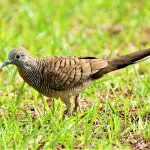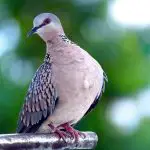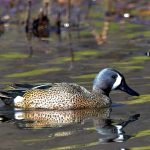Common Name: Gambel's Quail
Scientific Name: Callipepla gambelii| Size | Diet | Range in Hawaii | Status in Hawaii |
|---|---|---|---|
| 10 in. - 11 in. | seeds, fruits, leaves, and buds | the Big island and Kahoʻolawe | Least Concern |
Gambel’s quail (Callipepla gambelii) is a species of bird native to the southwestern United States and parts of northwestern Mexico. Named after William Gambel, an American naturalist, this small, ground-dwelling bird belongs to the New World quail family. They are known for their unique appearance, interesting behaviors, and important role in their ecosystems.
Although they are not native to Hawaii, Gambel’s Quail have been introduced to the islands and can be found in small numbers on Kaho’olawe and the slopes of Mauna Loa on the Big Island. Let’s take a closer look at the fascinating world of Gambel’s quail and uncover the secrets of their desert lifestyle in this article.
Gambel’s quail
Appearance
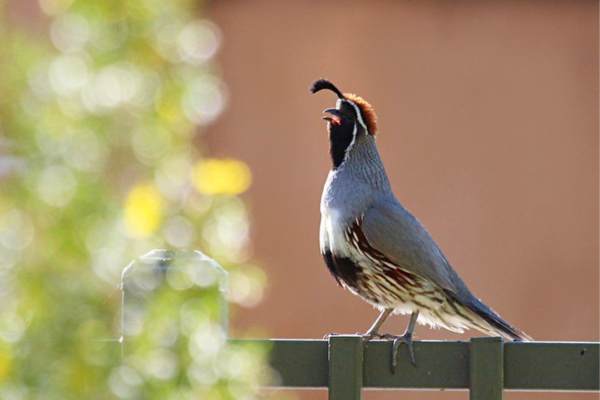
A Gambel’s quail have a distinct appearance which size varies approximately 10-11 inches (25-28 centimeters) in length. Males showcase a grayish-blue body, chestnut sides, and a black face with a white stripe. They also have a forward-curving black topknot.
Females have a more muted brownish-gray plumage with a lighter crest. These visually captivating birds add charm to their desert habitats.
Diet
Gambel’s quail have an omnivorous diet, meaning they consume a variety of plant matter and insects. Their diet primarily consists of seeds, fruits, leaves, and buds.
Behavior
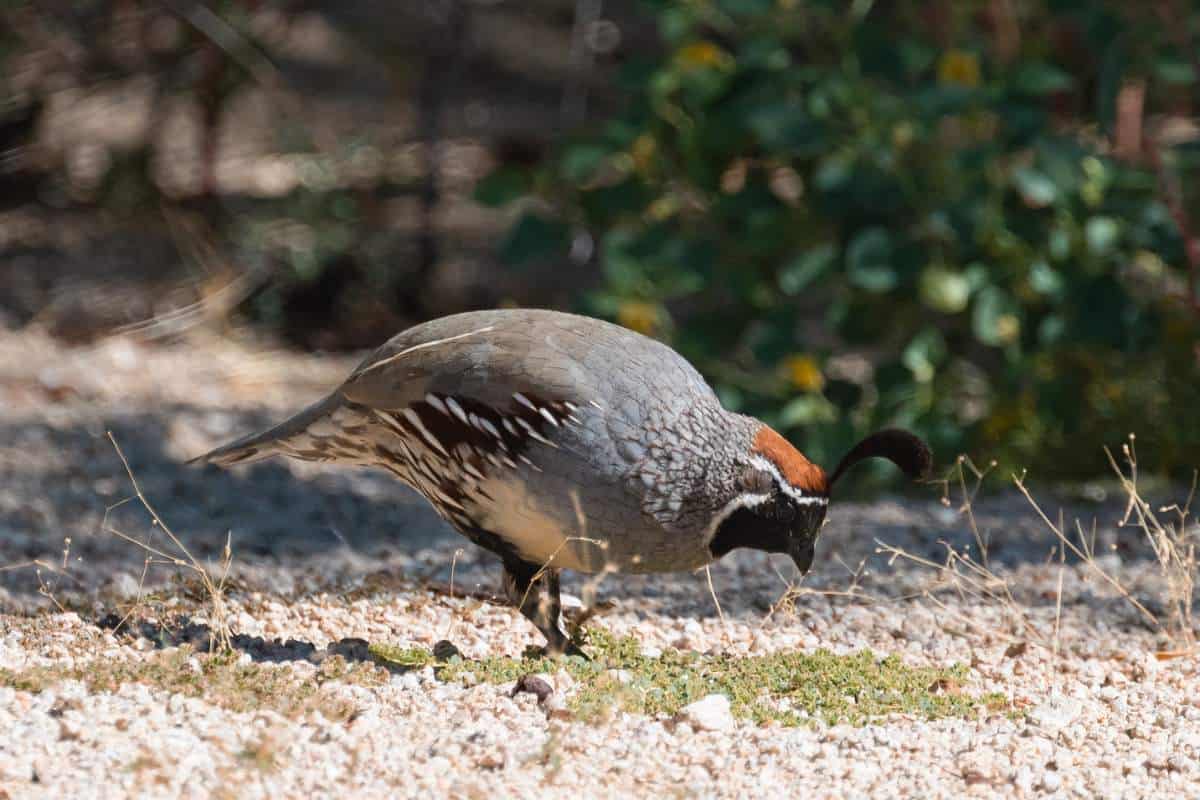
A Gambel’s quail exhibit fascinating behaviors that contribute to their social dynamics and survival strategies. These small birds are highly social and typically live in groups known as coveys.
Coveys consist of several family units, including a dominant male, multiple females, and their offspring. Living in coveys provides safety in numbers and allows for cooperative behaviors.
When it comes to foraging, Gambel’s quail rely on their strong legs and feet. They are ground-dwelling birds that scratch the soil to uncover a variety of food sources.
Gambel’s quail are known for their distinct vocalizations, which serve as a form of communication within the covey. They produce a series of rhythmic clucking sounds that can be heard during various situations, such as locating other group members, warning of danger, or coordinating movements within the group.
Nesting
Gambel’s quail typically build their nests on the ground, often concealed under vegetation or against natural features like rocks or shrubs. Nests are shallow depressions lined with grasses, leaves, and feathers to provide cushioning and insulation for the eggs.
The responsibility of nest construction falls primarily on the female, although the male may help in gathering materials. The female selects a suitable nesting site and constructs the nest using materials available in the surrounding environment.
Gambel’s quail have a relatively large clutch size, with females laying an average of 10-12 eggs per nest. The female incubates the eggs, but interestingly, the male shares the incubation duties. The male takes turns with the female, usually during the hottest parts of the day, to provide temperature regulation and ensure the eggs are protected.
Incubation lasts for approximately 21-24 days. Once the eggs hatch, both parents play an active role in caring for the chicks. They guide and protect them, teach them how to forage for food, and lead them to safe areas. The young quail grow rapidly and gain independence within a few weeks.
It’s worth noting that Gambel’s quail may build multiple nests throughout the breeding season, and they can renest if a nest fails or is destroyed. This flexibility in nesting behavior helps ensure the survival of their offspring in unpredictable desert environments.
Habitat
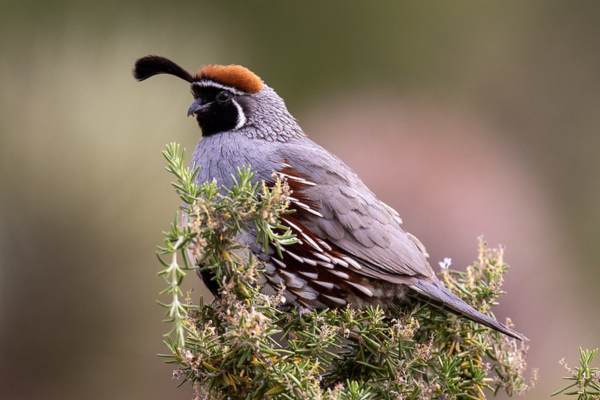
The Gambel’s quail are primarily found in arid and semiarid habitats. They are commonly observed in desert scrub habitats, which are characterized by low-growing shrubs, cacti, and sparse vegetation. In these areas, Gambel’s quail find cover for protection from predators and seek shelter from extreme temperatures.
Range
Gambel’s quail have been brought to the Hawaiian Islands and are now present on Kaho’olawe and the big island, specifically on the slopes of Mauna Loa.
Conservation Status
The conservation status of Gambel’s quail (Callipepla gambelii) is currently categorized as a species of “Least Concern” by the International Union for Conservation of Nature (IUCN).
Interesting Facts
1. Cooperative parenting
Males play an active role in incubating the eggs and caring for the young, which is a behavior not commonly seen in many bird species. They share incubation duties with the females and assist in raising and protecting the chicks after hatching.
2. Vocal communicators
Gambel’s quail have a distinct vocalization repertoire. They produce a series of rhythmic clucking sounds that serve as a means of communication within the covey. These calls help them locate other group members, warn of danger, and coordinate movements within the group.
3. They are swift fliers
Despite being primarily ground-dwelling birds, Gambel’s quail are capable of short bursts of rapid and agile flight. They use flight as a means of escape from predators or to reach suitable roosting or foraging sites.
4. Popular game bird
Due to their adaptability, attractive appearance, and challenging hunting opportunities, Gambel’s quail are a popular game bird among hunters. Proper management of hunting practices is necessary to ensure sustainable populations and conservation of the species.
5. Engaged in dust bathing
Gambel’s quail engage in dust bathing as a means of maintaining their plumage and controlling parasites. They vigorously scratch the ground, creating a shallow depression, and then flop into the dust, flapping their wings and kicking up dust to cover their feathers.
Frequently Asked Questions
1. How long do Gambel’s quail live?
The lifespan of Gambel’s quail in the wild can vary, but on average, they live between 1.5 to 3 years. Various factors such as predation, habitat conditions, and availability of food and water sources can influence their longevity.
2. Can Gambel’s quail interbreed with other quail species?
Gambel’s quail can hybridize with other quail species, such as California quail and Scaled quail, where their ranges overlap. The resulting offspring may display mixed characteristics of both parent species.
3. Are Gambel’s quail monogamous?
This bird species exhibit a monogamous breeding system. Mated pairs form long-term bonds and remain together throughout the breeding season. The male and female share responsibilities such as incubating the eggs and caring for the hatchlings.
4. Are Gambel’s quail kept as pets?
While Gambel’s quail can be kept as pets by individuals with appropriate permits and facilities, they are primarily wild birds and have specific habitat and social requirements that are challenging to replicate in a domestic setting. It is generally recommended to appreciate Gambel’s quail in their natural habitats rather than attempting to keep them as pets.
Can Gambel’s quail swim?
Gambel’s quail are not strong swimmers and are not adapted for swimming. They typically avoid bodies of water and prefer to stay on dry land.

